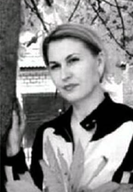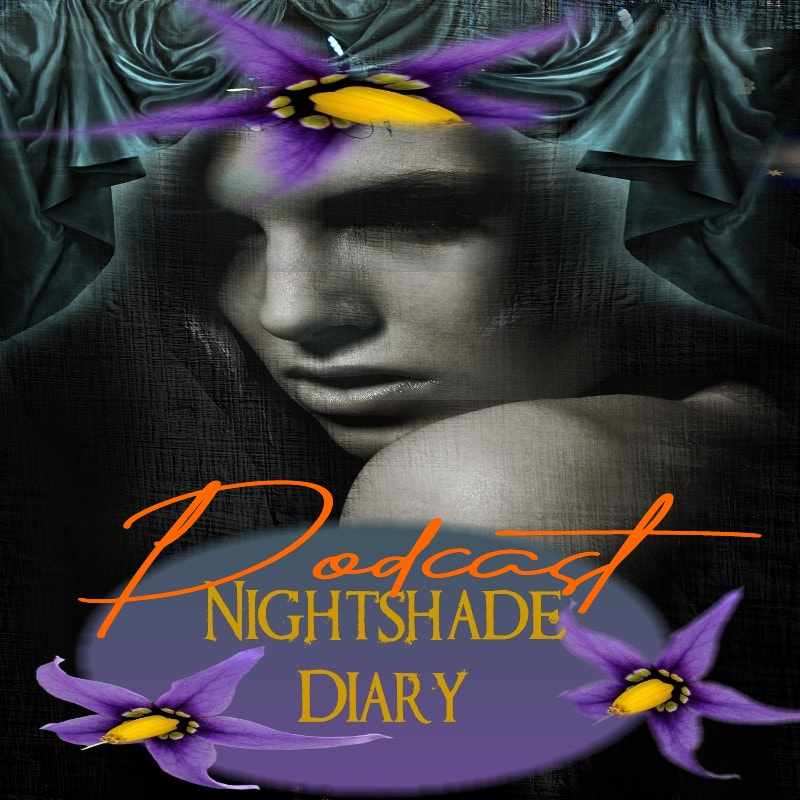 By M.P. Pellicer | Stranger Than Fiction Stories Many of these creations on canvas are at times described by the artist as being inspired from something outside themselves. Are they portraits or portals?  Svetlana Telets Svetlana Telets THE RAIN WOMAN Ukranian artist Svetlana Telets was a newly minted artist who graduated in 1996 from Grekov Odessa Art School. Then she started to suffer nightmares and the feeling of being watched, by someone or something. The spell she had endured for six months was broken one day, when she took her paintbrush and produced the painting The Rain Woman in only 5 hours. She had never seen this subject before. She said: I always felt like someone was watching me. I always drove such thoughts away. Then, one day, by the way it wasn’t a rainy day at all, I was sitting in front of a blank canvas and thought of what I could draw. Suddenly I saw clearly the contours of a woman. Her face, colors, shades.. I saw every detail of the image. I started to draw it, as if someone drove my hand over the paper. In five hours I managed to finish it.  Woman in the Rain or Rain Woman c.1996 Woman in the Rain or Rain Woman c.1996 She exhibited it in Vinnitsa at a local salon. Connoisseurs came up to her and shared the same impressions she had felt while she worked on it. The portrait sold quickly. The customer was a businesswoman who hung it in her bedroom. Within two weeks Svetlana heard from the woman who was frightened. She said, "Please pick her up. I cannot sleep. It seems that there is someone in the apartment besides me. I even took it off the wall and hid it behind the closet, but I still can't do it." The second person to bring it home, hung it in his living room. He found that he soon couldn't stand the portrait. He returned it and took only took half of what he paid for it. He said, "I dream about her. Every night she appears and follows me like a shadow." Another man, a skeptic, had already seen the painting before he bought it. His skepticism turned into fear when he started to see the lady with her "white eyes" everywhere. When he returned it to the salon, he said, "At first I didn't notice how white her eyes were and then they started appearing everywhere. It seemed that a little more and I would drown in them. I'd rather buy something classic." It hung at the Vinnytsia salon Merckx-Furniture in Kiev. Customers who visited the shop claimed that sometimes you could catch the painting smiling, and to some there was often a glance of anger. The publication KP asked the artist if she was looking for a new owner. She said, "I'm in no hurry. I am sure that each painting is born for a specific person. I believe the for my 'Woman' there will be someone for who it was painted. I understand that many people don't need this melancholy in her eyes now. It's just not interior design. But someone is looking for her —just like she is looking for them." According to Archpriest Vitaly Goloskevich a priest at the Transfiguration Cathedral, Vinnitsa said: A person has a spirit and a soul. There are truly spiritual works of art, and there are spiritual ones. And the painting you are talking about represents just such soulful art. But it does not come from God.  Sergei Skachkov, former vocalist of the band Zemlyane Sergei Skachkov, former vocalist of the band Zemlyane In 2008, Sergei Skachkov, frontman of the group Zemlyane (Earthlings) read about the painting while flying to a concert in Kanev. The painting appeared on the cover of Komsomolskaya Pravda. He read the painting had been looking for an owner for 11 years. This is when he decided it should belong to him. Svetlana was asked to take the portrait to Kyiv for the new customer. She said, "I approached the 'Woman' and mentally asked: 'if you want to live with this musician, make sure everything works out'. And I felt her silent consent." She turned the painting over to the musician at a hotel, with the impression that "she herself wanted to leave me." Is the painting cursed, or is it a question that the buyers were primed to believe it was evil?  Portrait of Miss Henrietta Nelson by William Johnson c.1780 Portrait of Miss Henrietta Nelson by William Johnson c.1780 PORTRAIT OF MISS HENRIETTA NELSON IN A BLUE AND WHITE GOWN AND WHITE HAT, HOLDING A ROSE, IN A ROCOCO INTERIOR Henrietta came to Yaxley Hall in Eye (England) in 1739, when she was 5 years old to live with her great aunt Margaret Leeke after her parents died in a carriage accident. A few years before in 1727, Robert Yaxley was found almost dead on the road, with his skull broken and his pockets turned out. He was not expected to live. This is when the Leekes came to Yaxley Hall. Henrietta's portrait was painted in 1780, by William Johnson. She was only 46 years old when she posed for it, and lived many more years until 1816, when she died after falling down a flight of stairs from her bedroom. The unmarried spinster was 82 years old.  Henrietta Nelson's obit c.1816 Henrietta Nelson's obit c.1816 Fulfilling her wishes, her cousin Francis Leeke built a private mausoleum for her on the grounds of Yaxley Hall. Francis died in 1836, and his daughter and her husband decided to move and dismantle the mausoleum. They placed her remains in the graveyard of the nearby Church of St. Mary which dates back to medieval times. Her portrait hung at the home of a family friend in Norfolk for many years. That's when people said the women in the painting was watching them. It went to other places, and was gone almost a century before the portrait was returned to Yaxley Hall. Perhaps her absence did serve a purpose, since the manor built in 1520, had two wings burn down in 1922. A ghost fitting Henrietta's appearance in the painting is said to be seen on the grounds. The reason she is said not to lie quiet in her grave is due to the destruction of the mausoleum.  Portrait of a Lady by Juan Luna c.19th century Portrait of a Lady by Juan Luna c.19th century PORTRAIT OF A LADY The lady in question is Paz Pardo de Tavera, wife of the artist Juan Luna. He produced the work in 1890, this was two years before he murdered his 28-year-old wife. The painting is said to cause misfortune and death to anyone who owns it. The source is said to be the spirit of Paz. She brought death in car accidents, misfortune in finances, miscarriages and ill health. Juan Luna de San Pedro y Novicio Ancheta was a Filipino artist born in 1857. He would go on to study art in Europe, and lived in poverty while producing many of his famous works, until he won prizes for some of his paintings. In Paris he rubbed elbows with Filipino artists and intellectuals, among them Trinidad and Felix Pardo de Tavera, who would eventually introduce him to their sister. In 1886, he married Maria de la Paz Pardo de Tavera y Gorricho who was born in the Philippines, a mestiza of Spanish-Portuguese extraction. She belonged to a very wealthy political family in self-exile from the Philippines, and had lived most of her life in Paris. Her mother did not approve of the match, but was convinced by her sons. In the six years of their marriage Juan and Paz had two children, Andres and Maria de la Paz.  Juan Luna c.1890s Juan Luna c.1890s In 1892, Luna lived with his wife, her two brothers, and his mother-in-law at Villa Dupont on Rue Pergolese in Paris. Next to the cottage, Luna had his atelier or studio where he worked on his paintings. There are various versions of what happened in September of that year. But one thing is certain, which is that it was precipitated by Luna suspecting his wife was unfaithful to him. She had spent two months in Mont Dore recovering from the death of their daughter Bibi. Upon her return, he threatened her with a revolver but she admitted nothing, however of one thing he was convinced, which was that his wife did not love him any longer. He told her, they along with their son Andres, would leave for Spain. It was said that Paz was terrified of her now paranoid and violent husband, and she was convinced by her family to stay in Paris and obtain a separation from Luna. Whether she didn't want to leave in the first place, or she was convinced by her family; on the day they were to leave and the luggage was packed, Luna came to the house and found a solicitor waiting with his two brother-in-laws. Later he told police this story: His wife and mother in law were locked in the bedroom upstairs. Then he heard them crying out from a window, 'Help, help my husband wishes to kill me.'  A group photo in Paris, with Paz standing second from right. (Source - The Lopez Memorial Museum Collection) A group photo in Paris, with Paz standing second from right. (Source - The Lopez Memorial Museum Collection) After finding the bedroom locked he went downstairs and grabbed a revolver. He shot one of his brother-in-laws Felix Pardo de Tavera, who was wounded and would survive. He broke down the bedroom door, and then the bathroom door where both women were hiding and shot them both. His mother-in-law died instantly, and his wife who was shot in the head would linger two weeks before dying. Luna tried to shoot himself but a servant took the gun from him. Later Luna admitted he was prey to intense jealousy when it came to his wife. It was rumored that he had no money and the family was kept by his mother-in-law. Police arrested him, and he went to trial for the crime in February, 1893. Like the murder, there are two versions to the outcome. In one he was acquitted and he moved to Madrid five days later. In the other, he was found guilty but because it was a crime of passion he was given a light sentence, which was banishment from Paris. He left with his son Andres, who was 5 years old and witnessed the murder since he was in the bathroom when his mother and grandmother were shot.  Dr. Trinidad Pardo de Tavera Dr. Trinidad Pardo de Tavera It was rumored that Dr. Trinidad Pardo de Tavera decided to burn all of Luna's paintings in his possession, and for years there would be none of his works in any Pardo de Tavera household. The doctor continued to live in Paris and died in 1925. He is buried in Père-Lachaise Cemetery. Luna returned to the Philippines in 1894, and he was arrested in 1896 for sedition. His brother belonged to the Katipunan Movement who were described in the newspapers of the time as a murderous secret society, whose object it was to secure the freedom of the Philippines by putting to the sword all the Spaniard in the archipelago. Luna was pardoned and left for Spain. Five years after he killed his wife, Juan Luna died on December 7, 1899, in Hong Kong when he heard of his brother's death at the hands of soldiers loyal to General Emilio Aguinaldo. He was 42, and buried at Happy Valley Cemetery, but in 1920 his remains were removed and kept at this son's house, and later transferred to a niche at the Crypt Chapel of San Agustin.  Paz Pardo de Tavera with her children in Paris c.1891 Paz Pardo de Tavera with her children in Paris c.1891 The portrait was originally titled Paz Pardo de Tavera, before it was changed to Portrait of a Lady. How the painting made its way back to Manila is a mystery, and the nexus of its curse remains just as obscure. Its first owner Manuel Garcia sold it after business took a downturn. There was mention of a couple who owned it in 1980, and their house in Forbes Park burned down, but the painting was saved. Then it came into the hands of Betty Bantug Benitez who died in a freak automobile accident in 1981, when a car she was a passenger in drove off the road and hit a tree. Vicky and Tony Nazareno purchased it next, and soon after the family closed one of its biggest stores. Then Tony got sick when his carotid artery got swollen, and the doctors couldn't figure out what was producing this symptom. He also started to experience high blood pressure. Eventually the couple would separate, and Tony Nazareno's condition got worse. He died in 2005.  Luna, Jose Rizal and Valentin Ventura in Paris. The lady in the background, sitting by the steps, holding a child, is Paz (Source - The Lopez Memorial Museum Collection) Luna, Jose Rizal and Valentin Ventura in Paris. The lady in the background, sitting by the steps, holding a child, is Paz (Source - The Lopez Memorial Museum Collection) The painting was exhibited at art shows during the 1980s. This is when Imelda Marcos saw and acquired it. It was hanging in the office of the Philippine president, when Ninoy Aquino was assassinated in 1983. Aquino was a political opponent of President Ferdinand Marcos, who would be exiled in 1986. Then it went to the home of Imee Marcos Manotoc, during which time it is said she suffered a miscarriage. Susano "Jun" Gonzales a famous art restoration expert from the 1970s and '80s did work on the Luna portrait. He would be grusomely murdered about a dozen years after he worked on it. It was donated to the Metropolitan Museum in 1986, and on the opening night in 1987, the spotlight over it exploded. No other lighting in the museum behaved this way.  The Parisian Life by Juan Luna The Parisian Life by Juan Luna One of the biggest mysteries is that the lady in the portrait doesn't look like Paz Pardo de Tavera. Her skin color is too light which leads some to believe it was a favorite model of Luna's named Madamoiselle Angela Duche. Others believe she is an idealized version of Paz. But would a jealous man like Juan Luna paint his wife with a partially exposed breast? Another portrait produced in 1892, the year Luna would kill his wife, The Parisian Life has an unnamed model, who again some believe are his wife or Angela.  Juan and Paz's son Andrés as an adult Juan and Paz's son Andrés as an adult Juan and Paz's son Andrés "Luling" Luna de San Pedro (1887-1952) would go on to become a successful architect. He designed The Crystal Arcade which was inaugrated in 1932, built on land owned by his maternal family. During WWII more than 80% of Manila's structures were destroyed. The Crystal Arcade was located in the area of the most fierce combat. After the war the first floor was occupied by stores, and the second floor was used for storage. It never regained the elegance of its original design and was razed in the 1960s. Some believe the the structure was burned down because Luling kept the urn of his father’s ashes there.
0 Comments
Your comment will be posted after it is approved.
Leave a Reply. |
Stranger Than Fiction StoriesM.P. PellicerAuthor, Narrator and Producer Archives
July 2024
Categories
All
|
Stories of the Supernatural
- Stories of the Supernatural
- Miami Ghost Chronicles
- M.P. Pellicer | Author
- Stranger Than Fiction Stories
- Eerie News
- Supernatural Storytime
-
Astrology Today
- Tarot
- Horoscope
- Zodiac
-
Haunted Places
- Animal Hauntings
- Belleview Biltmore Hotel
- Bobby Mackey's Honky Tonk
- Brookdale Lodge
- Chacachacare Island
- Coral Castle
- Drayton Hall Plantation
- Jonathan Dickinson State Park
- Kreischer Mansion
- Miami Biltmore Hotel
- Miami Forgotten Properties
- Myrtles Plantation
- Pinewood Cemetery
- Rolling Hills Asylum
- St. Ann's Retreat
- Stranahan Cromartie House
- The Devil Tree
- Trans-Allegheny Lunatic Asylum
- West Virginia Penitentiary
- Paranormal Podcasts
"When misguided public opinion honors what is despicable and despises what is honorable, punishes virtue and rewards vice, encourages what is harmful and discourages what is useful, applauds falsehood and smothers truth under indifference or insult, a nation turns its back on progress and can be restored only by the terrible lessons of catastrophe."
- Frederic Bastiat
- Frederic Bastiat

Copyright © 2009-2024 Eleventh Hour LLC. All Rights Reserved ®
DISCLAIMER
DISCLAIMER
 RSS Feed
RSS Feed
















